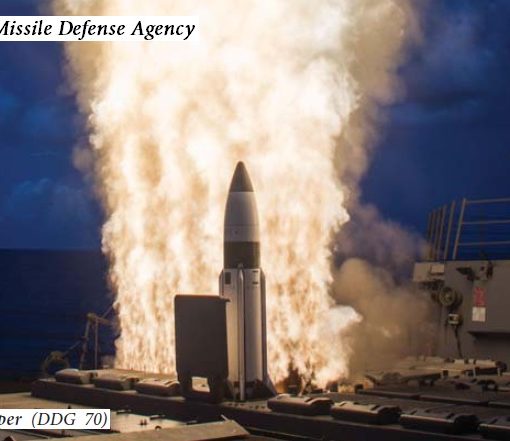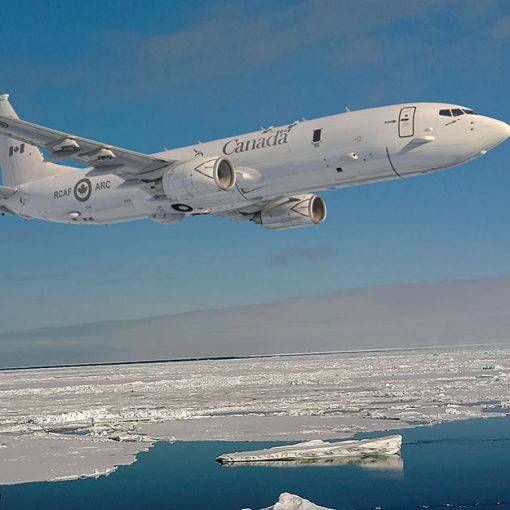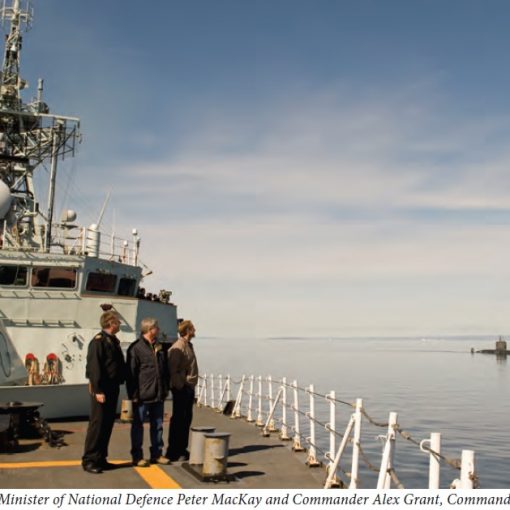An article published by David Publiese in the Ottawa Citizen on December 3rd (with the same title as this one and available on his Defence Watch website here) asks a vitally important question. With Vice-Admiral Norman’s admission in an interview with CBC (available here) that the cost to build the 15 replacement ships for the navy’s destroyers and frigates now is likely $30B, with billions more required for their maintenance and operations, some very serious soul-searching is required to reconcile cost, numbers and capabilities of the future navy. Typically, the media views this as a fairly simple trade-off between numbers of hulls and levels of capability. In my view, this is a far more complicated question of compromise that spans the full spectrum of strategic principles, operational concepts and tactical processes. Here are five things that I think need to happen in order to stop this becoming another controversy akin the one that resulted in the Avro Arrow debacle.
- The government must commit to a clear set of strategic priorities. Right now, the shipbuilding program is ‘all things to all people’. For the federal government it is about developing the national industrial base and finding a cost-effective means of replacing the federal fleets. For the provincial governments it is about bringing economic benefits through employment and local procurement. For the navy and coast guard it is about replacing their primary tools with better and more reliable equipment. The conflict in priorities is now evident and needs to be resolved. The new-build industry (versus the ship repair and overhaul industry, which are emphatically not the same things) has been moribund for decades and cannot leap ahead several generations without some carefully planned steps. It may be that one priority (building world-class ships, for instance) may have to take second or third place in the scheme of things while the industry and the workforce get themselves sorted out. The navy and coast guard may have to ‘take one for the team’ while they wait for the system to prove its abilities and growth potential.
- The government must fill the maritime security policy void. The shipbuilding program is largely about re-building the existing fleet structure with like or better ships. There is no ‘proof’ that this is what the country needs while there is mounting evidence that the costs are unaffordable. The recommendations by the leaders of the navy and coast guard about numbers, types and capabilities of ships were accepted without criticism or public debate. What remains of the current fleet structure of the navy was based on the NATO Maritime Strategy of the 1980s and a lot has changed since then. While still a member of the alliance, Canada has been engaged in operations around the world on a variety of missions that were never envisioned during the Cold War. It is long past due to issue a proper White Paper on Defence and Security that takes a hard look at current realities and future trends. Does a frigate-based fleet lend itself well to global engagement in a wide variety of safety, security and sovereignty contingencies? If so, it should be based on an air-tight logic that fits within a broader national security policy.
- The ‘one-size fits all’ logic of the strategy must be challenged. With a small fleet, having a common pool of resources eases the planning of anticipated operations. The danger is that with only a single type of ‘hammer’ in the naval toolbox, all problems tend to look like nails. According to DND’s own forecast in The Future Security Environment, 2008-2030, the future will be entirely unpredictable: “The defence team of the future can expect to be tasked across the full spectrum of operations on both domestic (routine, contingency, sovereignty) and expeditionary missions (humanitarian, stabilization, reconstruction, combat) that call for both conventional and asymmetric capabilities” (p. 103). How a uniform force structure can be seen as the appropriate response to all tasks needs to be explained in exacting detail.
- The survivability of medium-sized warships against modern weapon systems is questionable. Modern anti-ship missiles, and especially torpedoes, are one-shot kill weapons if they hit their intended target. Wayne Hughes, Jr., in his seminal book Fleet Tactics and Coastal Combat, provides conclusive evidence that modern weaponry has produced what he calls a “fundamental point,” the implications of which are poorly understood: “modern missiles have brought into question and sometimes overturned the principle of massing forces.” In his section on “Missile Equations” (pp. 268-84), analysis of 222 anti-ship missiles fired in hostilities produced the following probability of achieving a hit per shot:
.913 – against defenseless ships;
.684 – against defendable warships that failed to react; and
.264 – against defendable warships that did attempt to defend themselves.
With a one-shot kill capability and a minimum ‘leaker’ rate of more than 25%, the idea that larger and more expensive ships are more survivable than smaller ships should definitely be challenged. Hughes shows that a warship must be over 10,000 tonnes in displacement before it merits more than one missile hit to put it out of action (the rate is one additional hit per 10,000 tonnes of displacement). Even more challenging anti-ship systems are in the offing and it is unlikely self-defence systems will keep pace. Building very expensive warships that will be vulnerable in combat may not be an effective use of resources and, at the very least, will impose severe restrictions on operators. In a high threat environment, it is likely that only submarines will be able to operate there and be considered ‘survivable’. - The military role is not the basis for all future maritime security needs. In the past, it has long been argued that a military force is capable of ‘lesser’ missions by default. Leadmark, the Navy’s Strategy for 2020, and its successor Securing Canada’s Ocean Frontiers, are full of statements to the effect that naval missions are founded on combat capabilities alone. The Future Security Environment shows that the current and anticipated levels of complexity are so extraordinary that practically no maritime problem can be answered with naval forces alone. The maritime migrant crisis ongoing in the Mediterranean Sea is only the latest example of this phenomenon. It is long past time for the navy to broaden its approach to maritime security problems and develop a doctrine that explores options, rather than shutting them off by holding a narrow view of the organization’s future.
Unconventional approaches to shipbuilding and cost saving do exist. How much risk the country and our maritime security forces can accept in the inevitable compromise process has yet to be discussed. Right now the navy is holding fast to a very risk-adverse posture. Their list of capability requirements promotes uniformity and conventionality. Evidently, they do not trust that the shipbuilding strategy will develop the industrial base into a mechanism capable of answering their needs in an ongoing fashion. They are still bargaining hard for the best ship they can get because it will be their workhorse for decades to come, just as generations of admirals have done before them. Sooner or later they will be told to ‘live within their means’ and those means will be subjected to a very harsh scrutiny. Admiral Norman is right to advocate for an open and public discussion on the matter, but he will need to have more than the traditional arguments to justify the requirements.




